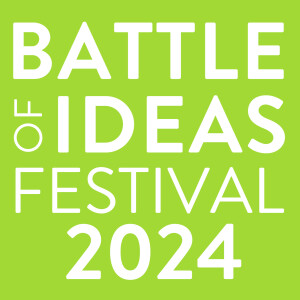
Wednesday Apr 02, 2025
What is great art?
Recorded at the Battle of Ideas festival 2024 on Sunday 20 October at Church House, Westminster.
ORIGINAL INTRODUCTION
If you want to know a quick answer to what is considered ‘great’ in the canon of art history, look no further than those targeted by contemporary climate activists: Vincent van Gogh, John Constable, Sandro Botticelli. Paintings by these artists are prized within national collections and treasured by the public because they are considered some of the best ever created.
Notions of greatness imply a hierarchy which, today, many see as a problem. For some, it is critics who are to blame – rightly or wrongly – for influencing this hierarchy. Austrian art critic EH Gombrich curated a narrative of art history using ‘welcome landmarks’ in his text The Story of Art, arguing that ‘the most famous works [of art] are really often the greatest by many standards’. In other words, great art is well-known by the public because it is great, and being guided by these standards is a means to make art history more accessible for those who might not know where to begin.
Scholars have long puzzled over the standards for artistic greatness. Should artists strive to achieve a good resemblance? What about trickery? Writing in ancient Greece, Pliny the Elder described how Parrhasius was crowned the greatest artist because he was able to fool his rival with an optical illusion. And what about aesthetics, from symmetry, perspective to colour theory? Or is there something more intangible to great art – the pain you feel standing in front of Picasso’s Guernica, or the or the joy of Klimt’s The Kiss? Should great art contain a magic that can only come from true genius, no matter how skilled the brushstrokes or carefully trained the sculpting knife?
Post-modern theories critique the notion of ‘great’ altogether, for representing an elite Western viewpoint. For these critics, the socially-constructed nature of ‘greatness’ as a standard of artistic value is a deception of objectivity that lionises the white male ‘genius’ while cloaking his scandalous behaviour. They ask why others – often black or female – have been given less attention, from Georgia O’Keeffe to Henry Ossawa Tanner. These debates have real-world implications. Today, curators may privilege certain works of art by putting them on (or off) display based on the artist’s identity, rather than the value of their work.
What are the standards for ‘great’ art? Has the drive to include diverse artists created a new hierarchy, one in which the public is led by identity rather than excellence? Should we scrap the canon altogether, and embrace the notion that art is a subjective experience? And if standards are still useful in art appreciation and the education of a new generation of artists, what should they be, and who should decide them?
SPEAKERS
Ella Nixon
curator; writer; PhD student, Northumbria University; fellow, Common Sense Caledonia; 2023 fellow, Roger Scruton
Dido Powell
painter; lecturer and tutor in art history and painting
Angelica Walker-Werth
writer, editor and programmes manager, Objective Standard Institute
CHAIR
Dr Wendy Earle
convenor, Arts and Society Forum; co-host, Arts First podcast
No comments yet. Be the first to say something!